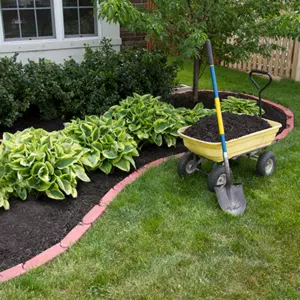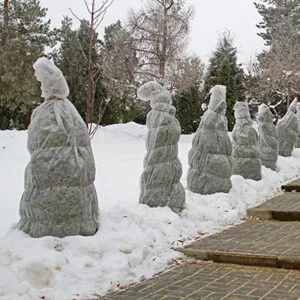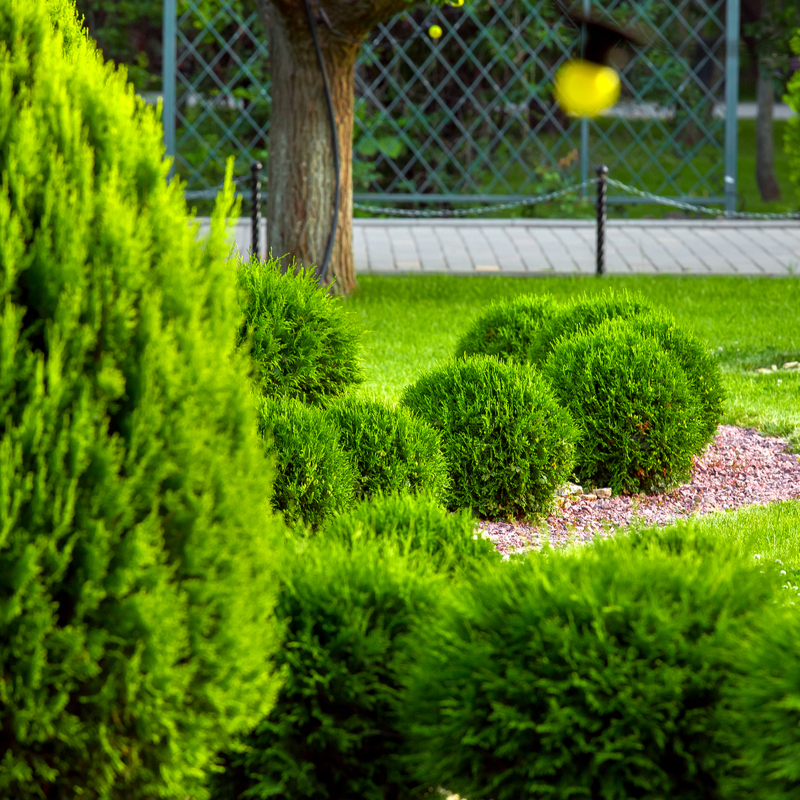Since ancient times, evergreen trees have been a symbol of hope. Evergreens retain their greenery when all other trees have lost their leaves and remind us that spring will come eventually. And while it’s true that evergreens are well-adapted to withstand the cooler months of the year, even they need a helping hand from time to time. By following these best practices for winter tree care, you can prepare your evergreen trees and shrubs for the cold months.
How To Get Your Evergreen Trees And Shrubs Ready For Winter
Keep Moisture Levels Adequate
The biggest boon for your trees and shrubs is maintaining proper moisture levels. As we’ll discuss throughout this blog, many problems arise with larger plants during the winter months resulting from a lack of moisture. More on this later.
Avoid Winter Kill
Winter kill is a condition that occurs when a plant has lost a substantial amount of water during the winter season. When trees are growing in spring and summer, they can absorb water through the root system. This water is then supplied to the rest of the tree via the trunk. In deciduous trees, those species that shed their leaves, this growth stops when the trees go dormant for winter. So deciduous trees like oaks and maples have to store up water for winter. On the other hand, Evergreen trees don’t lose their needles (needles are technically leaves, by the way), and so evergreens don’t go dormant as other trees do. Instead, they will continue to seek water through their roots.
Unfortunately, when the ground becomes frozen in winter, this hinders the tree’s ability to soak up the water it needs. And when it can’t get water, winter kill – also known as winter burn – will set in. This manifests via brown spots and sections of dead or dying limbs.
Mulch Around The Base Of Trees And Shrubs
 One of the easiest ways to keep your evergreens’ moisture levels up is by mulching. Mulch is naturally insulating, and so it helps keep the soil hydrated. This is especially important in winter, when the temperature can fluctuate drastically. Mulch comes in various materials like straw, compost, wood chips, or you could even use the leaves that have fallen off your other trees. Whichever material you choose, be sure to leave a six-inch space around the base of the tree or shrub. Then apply the mulch about 1 – 2 inches thick in a ring. The ring size will depend on how big the plant is, and it could be anywhere from 1- 3 feet in diameter.
One of the easiest ways to keep your evergreens’ moisture levels up is by mulching. Mulch is naturally insulating, and so it helps keep the soil hydrated. This is especially important in winter, when the temperature can fluctuate drastically. Mulch comes in various materials like straw, compost, wood chips, or you could even use the leaves that have fallen off your other trees. Whichever material you choose, be sure to leave a six-inch space around the base of the tree or shrub. Then apply the mulch about 1 – 2 inches thick in a ring. The ring size will depend on how big the plant is, and it could be anywhere from 1- 3 feet in diameter.
Be sure not to pile the mulch on too thickly, or it could invite pests and diseases. There is no shortage of microscopic critters that love dark, dank areas like under a pile of leaves. You don’t want to ward off one problem and trade it for another. If you’re not sure which mulch is the best for your yard, ask your Pine Valley Turf tree care service technician!
Bundle Up The Bushes
If you have smaller evergreen trees or shrubs, consider wrapping them in burlap. This accomplishes several things. Firstly, it provides some warmth for the plants – just like your winter coat keeps you warm. Because burlap is a porous material, it won’t affect the oxygen levels and smother the tree as a plastic tarp would. Secondly, burlap wraps prevent wind damage. All that cold, dry winter air can hurt the health of your tree. Thirdly, if you happen to live in an area that sees deer visitors, the burlap can discourage these unwanted guests from eating the trees. Lastly, wrapping evergreens close to roads, sidewalks, and driveways can shield them from any road salt that is sometimes used here in North Carolina. While this isn’t as common an occurrence as it would be for our northern neighbors, all that brine can dry out the trees.
Cover The Needles In Anti-desiccants
If you’re not familiar with these products, they are a godsend. Also known as anti-transpirants, these products are plant-safe sprays that cover evergreens with a protective coating for the winter season. And – you guessed it – these products help your trees retain moisture. November is the ideal time to do this for the first application, and it’s not a bad idea to reapply in January. Evergreen needles naturally produce a waxy coating that actually helps them block out harmful UV rays. When they are thirsty and malnourished, they are more susceptible to this type of damage. Anti-desiccant sprays will help combat this issue by locking in the moisture and keeping their waxy coating intact.
Find Tree And Shrub Care Near Charlotte
Give your evergreen trees a boost this winter with a little help from Pine Valley Turf. We are a full-service tree care company that will provide your larger ornamental plants with the nutrients and protection they need to stay healthy and fend off pests, diseases, and the stress of winter. We also offer lawn care services to keep the rest of your yard looking its best. If you’re interested in learning more or scheduling an appointment, you can reach us online here, or you can give us a call at (704) 831-8917.
Be sure to visit our Facebook, Instagram, and blog page for more helpful info on keeping your yard in good shape.



